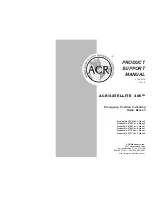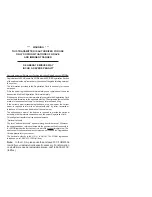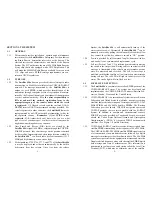
as well as being stored for later transmission to other LUTs. In
the real-time mode, the signal detection is limited to a mutual
EPIRB-satellite-LUT circular visibility area of about 2500 km
radius that moves with the satellite along its track. However,
because of the stored-mode capability at 406 MHz, the need for
this mutual EPIRB-satellite-LUT visibility is not essential, and
the system is fully functional in just the global mode.
1.3.4
The LUT processes the Doppler-shifted signal and determines
the location of the satellite EPIRB; then the LUT relays the
position of the distress to a Mission Control Center (MCC) where
the distress alert and location information is immediately for-
warded to an appropriate maritime Rescue Coordination Center
(RCC). The RCC dispatches Search and Rescue (SAR) forces.
1.3.5
The COSPAS-SARSAT System includes 33 LUTs and 19 MCCs
that provide real-time as well as global-mode coverage for the
northern hemisphere, while the southern hemisphere is presently
served primarily by the global mode. Additional LUTs and
MCCs are planned for installation in the near future both in the
northern and southern hemispheres.
1.3.6
Because most of the search and rescue forces presently are not
equipped to home on the 406 MHz Satellite EPIRB signal,
homing must be accomplished at 121.5 MHz.
1.3.7
The
Satellite 406
TM
EPIRB is available for all of the combinations
for category and class of operations. The following product codes
determine the options required to meet the specific mode of
operation:
Product No.
Cat. I
Cat. II
Class 1
Class 2
2754
X
X
2756
X
X
2758
X
X
2759
X
X
2772
X
X
2773
X
X
1.4
AUTHORIZATIONS
1.4.1
The
Satellite 406
TM
EPIRB meets the requirements of Federal
Communications Commission (FCC) Part 80 (Model No.'s
RLB-27 and RLB-28) and GMDSS (Model No. RLB-27).
1.5
CHARACTERISTICS
1.5.1
The
Satellite 406
TM
EPIRB is a floatable, battery operated unit.
The beacon case, with its external antenna, is waterproof. The
semiconductor circuits are mounted within the case assembly that
also contains the battery power supply. A Test/Ready/On
switch is installed on top of the beacon, along with a strobe light.
The beacon must be stored in its special mount, free of obstruc-
tions aboard a vessel for automatic float-off. The unit is self
buoyant and no external floatation devices are required.
1.6
TECHNICAL DATA Satellite 406
TM
1.6.1
Applicable Documents
RTCM
Standard for 406 MHz Satellite
EPIRBs
COSPAS-SARSAT
Document C/S T.001 Nov. 95
FCC
Part 80 (Model No.'s RLB-27
and RLB-28) and GMDSS (RLB-27)
UK
MPT 1259
1.6.2
Specifications
406 MHz Transmitter
Frequency
406.025 MHz
Frequency Stability
±2 parts per billion/100ms
Output Power
5 watts
Digital Message
Format
Serialized*
Duration
440 ms
Rate
400 bps
Encoding
Biphase L
Modulation
±1.1 radians peak
*Leaves ACR with Serialized U.S. code but can be reprogrammed at a
service center to Maritime or other coded format including nationality of
registration.
121.5 MHz Transmitter
Frequency
121.5 MHz
Frequency Tolerance
±50 ppm
Output Power
25 mW PEP
Modulation
Type
AM (3K20A3N)
Sweep Range
400 to 1200 Hz
Sweep Rate
3 Hz
- 3 -
- 4 -




























